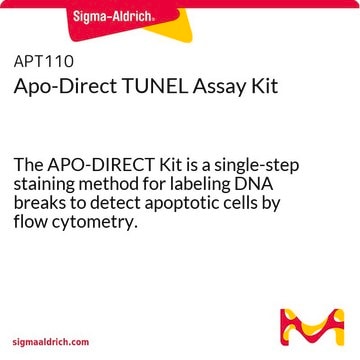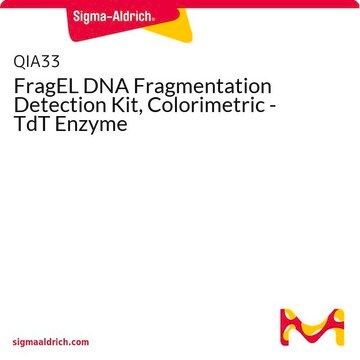11772457001
Roche
TUNEL AP
sufficient for 70 tests, solution, pkg of 3.5 mL
About This Item
Recommended Products
form
solution
usage
sufficient for 70 tests
packaging
pkg of 3.5 mL
manufacturer/tradename
Roche
shipped in
wet ice
storage temp.
2-8°C
General description
- Label intensity of apoptotic cells is higher with TUNEL compared to ISNT, resulting in an increased sensitivity.
- Kinetics of nucleotide incorporation is very rapid with TUNEL compared to the ISNT.
- TUNEL preferentially labels apoptotic cells compared to necrotic cells.[4]
Application
Components
Other Notes
signalword
Warning
hcodes
Hazard Classifications
Skin Sens. 1
Storage Class
12 - Non Combustible Liquids
wgk_germany
WGK 1
flash_point_f
No data available
flash_point_c
No data available
Choose from one of the most recent versions:
Already Own This Product?
Find documentation for the products that you have recently purchased in the Document Library.
Customers Also Viewed
Our team of scientists has experience in all areas of research including Life Science, Material Science, Chemical Synthesis, Chromatography, Analytical and many others.
Contact Technical Service











